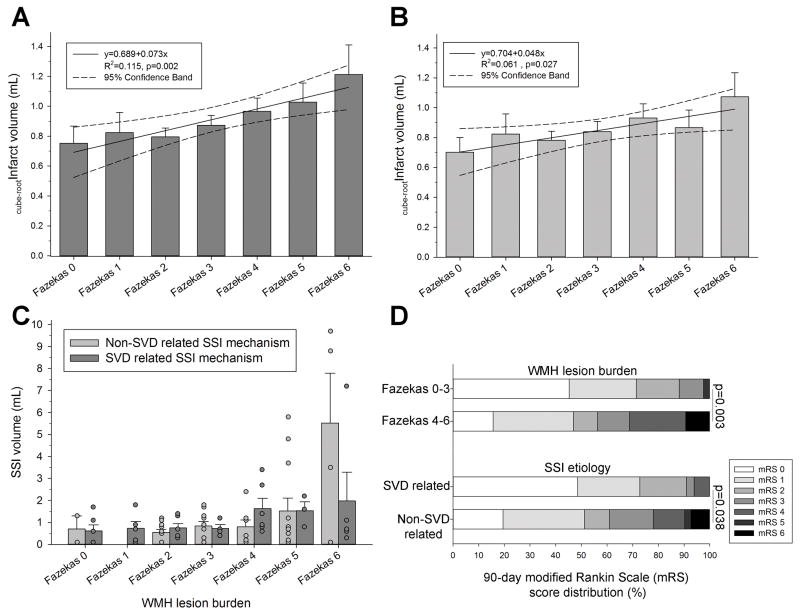Figure 2.
There was a significant linear association between increasing WMH lesion burden and SSI volumes both when considering the (A) maximal SSI volume as well as (B) mean SSI volume (linear regression with 95% confidence intervals; infarct volumes cube-root transformed). (C) There was no difference in the association between the maximal SSI volume and WMH burden in patients with small vessel disease (SVD) vs. non-SVD related small subcortical infarct (SSI) etiology as determined according the Causative Classification System (p=0.299; ANCOVA conducted on cube-root transformed SSI volumes but for better comparison with clinical observations the non-transformed infarct volumes are shown in this panel). Number of subjects (n) per Fazekas category (SVD/non-SVD mechanism): 0 (n=6/2), 1 (n=5/0), 2 (n=6/10), 3 (n=4/10), 4 (n=6/7), 5 (n=3/12), 6 (n=5/4). (D) Between group differences in the 90-day outcome when stratified according to WMH lesion burden (top) and SSI etiology (bottom), respectively (χ2-test). Bars are mean±S.E.M.

